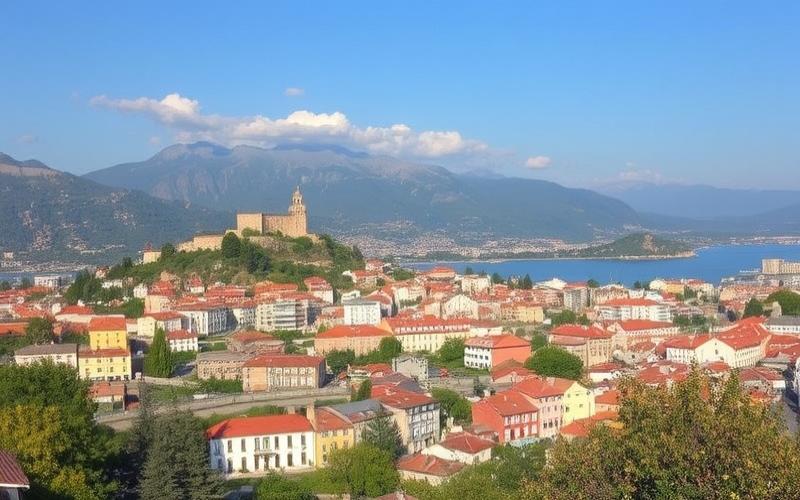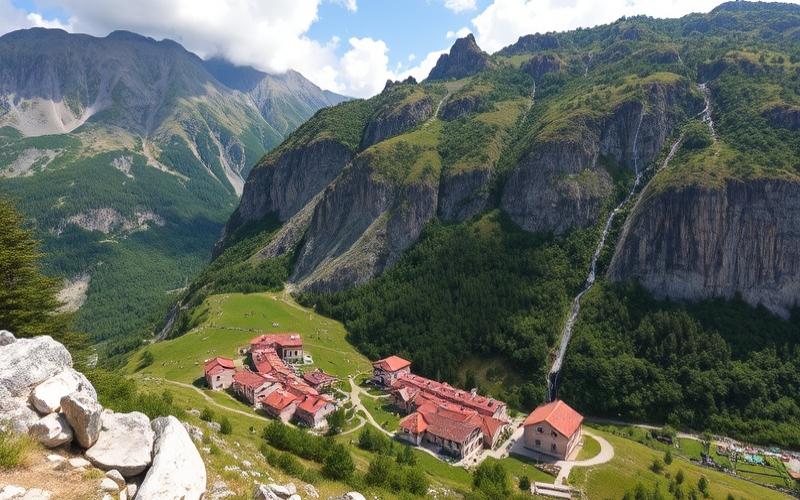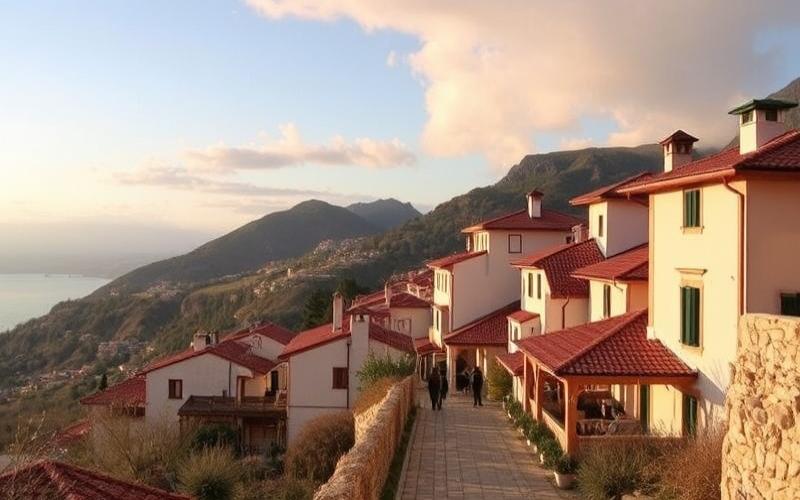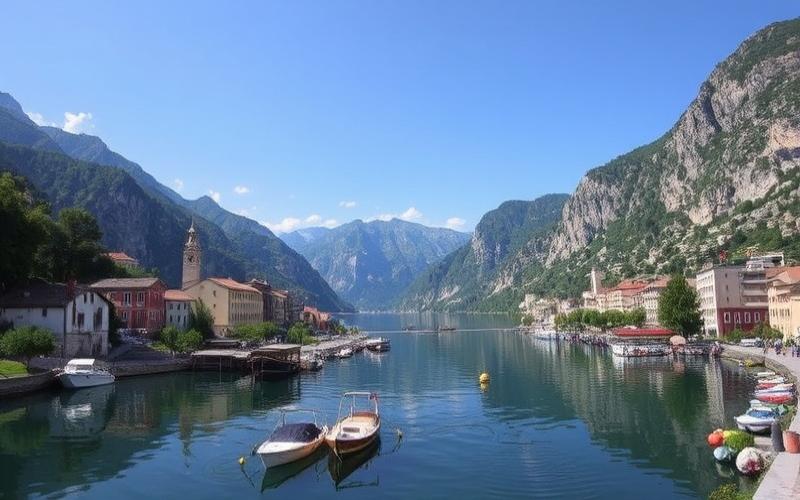
 Published on and written by Cyril Jarnias
Published on and written by Cyril Jarnias
With the growth of the education sector and Montenegro’s increasing appeal to international students, investing in student housing is becoming an increasingly considered path for bold investors. This small Balkan country, rich in picturesque landscapes and boasting a favorable economic environment, presents undeniable assets for those looking to diversify their real estate portfolio.
As the demand for suitable student accommodations continues to rise, the question arises: are student residences in Montenegro a truly promising investment opportunity or a risky bet given the volatility of the local real estate market? Between economic analyses and investor testimonials, this article delves into the heart of this potential new El Dorado to determine if profitability is on the horizon.
Trends in Montenegro’s Student Real Estate Market
Analysis of Montenegro’s student real estate market in 2025
Key Observed Trends:
- Growth in the student population: Montenegro attracts more students each year, particularly international ones, due to its accessible universities and attractive cost of living.
- Increasing demand for student housing: Demand for suitable accommodations (studios, shared apartments, student residences) is rising in major university cities. Rents remain affordable compared to Western Europe.
- Influential socio-economic factors:
- Low monthly cost of living (around €357 for a shared apartment).
- Affordable public services and internet facilitating student settlement.
- Tourist appeal boosting parallel real estate investments and increasing seasonal rental potential.
Summary Table of Key Factors:
| Factor | Impact on the Student Market |
|---|---|
| Growth in student population | Sustained increase in demand |
| Low cost of living | Attracts more foreign students |
| Urban development | New residences being built |
| Political stability | Security for investors |
Recent Developments in Construction:
- Increase in residential projects, including for the student segment; developers are responding to this new demand with modern constructions near campuses and major routes.
- Focus on automation and flexible leases to attract a young clientele prioritizing mobility and connectivity.
Potential Impact on Investors:
- Attractive rental yields due to high occupancy rates throughout the academic year.
- Diversification of the real estate portfolio with limited risk compared to more cyclical segments.
- Interesting tax potential through local or European schemes dedicated to rental investment.
List of Expected Effects on Yields:
- Stability due to the constant flow of students seeking functional housing
- Higher profitability than traditional rentals in some Montenegrin university cities
- Gradual appreciation linked to urban modernization around academic hubs
The outlook thus indicates that Montenegro’s student real estate market is dynamic, driven by sustained structural growth. This context creates an environment conducive to profitable investments in this sector.
Good to Know:
In Montenegro, the student real estate market shows a flourishing dynamic due to the increase in the student population, stimulated by the growing appeal of local universities. The demand for suitable student housing continues to grow, encouraging the construction of new residences to meet this influx. Socio-economic factors, such as the rise in the number of international students and policies favoring higher education, accentuate this trend. For investors, these conditions create an enticing opportunity with the prospect of attractive returns. Recent construction developments, particularly in university cities like Podgorica, highlight growth potential, although vigilance is required regarding local economic fluctuations that can impact profits.
Determining Factors for University Residence Yields
The university residence market in Montenegro presents several determining factors that directly influence their yield and attractiveness to investors.
Rental yields in sought-after areas of Montenegro like Budva and Kotor range between 5% and 7% annually, which constitutes an attractive basis for investors in the student residence sector. This performance is explained by several key elements that structure this evolving market.
Occupancy Rate and Impact on Yield
The occupancy rate represents a crucial indicator for the profitability of university residences. Although specific data for Montenegrin student residences are not explicitly mentioned, the trend observed in other markets like Cyprus, where a 19% increase in real estate transactions was noted in the first quarter of 2025, suggests a positive dynamic that could reflect in Montenegro.
The stability of rental income directly depends on the ability to maintain a high occupancy rate throughout the year, particularly during non-academic semester periods.
Structure of Rental Costs and Impact on ROI
| Component | Average Monthly Cost (€) |
| Shared apartment rent | 357 |
| Utilities | 37 |
| Internet | 25 |
| Local transport | Variable |
These relatively moderate costs compared to other European destinations allow investors to offer competitive rates while maintaining interesting margins.
Management of Operational Costs
Controlling operational costs is a major challenge to optimize the yield of university residences. The main expense items include:
- Building maintenance
- Management and security staff
- Common charges (water, electricity, heating)
- Insurance and local taxes
Effective management of these costs, potentially through technological energy control solutions or optimized maintenance contracts, can significantly improve operational margins.
Impact of Infrastructure and Services on Attractiveness
The offer of complementary services directly influences the ability to set competitive rents in the face of growing demand. Residences offering modern amenities and attractive common areas (study rooms, coworking spaces, sports facilities) can justify higher rates and attract more international students.
Regulatory Framework and Incentives
The process for obtaining permanent residence in Montenegro generally takes 60 days, with a maximum of six months in complex cases. This relative administrative simplicity is an advantage for foreign investors wishing to establish themselves in the country.
The Montenegrin government, in its economic development strategy, considers the education sector a priority, which could translate into tax incentives for investors in university infrastructure, although specific details of these programs are not specified in available sources.
Case Study: Comparison with the Cypriot Market
The Cypriot student residence market, which saw a 30% increase in foreign transactions (mainly non-EU) in the first quarter of 2025, offers an interesting point of comparison. This trend suggests that emerging markets like Montenegro could follow a similar trajectory, particularly with the increase in international student mobility post-pandemic.
Point to Note: The ability to attract international students, who are generally willing to pay higher rents than local students, is a determining factor for maximizing the yield of university residences in Montenegro.
Good to Know:
In Montenegro, occupancy rates for university residences, often above 80%, are crucial to ensuring stable yields, directly influencing the return on investment. Competitive rental fees, based on local market prices, maximize gains while attracting students. Prudent management of operational costs, including maintenance and security services, is essential to maintain profitability, while modern infrastructure and additional services like free Wi-Fi and community spaces increase the attractiveness of residences. Government policies, such as tax incentives for investors in student real estate, can enhance profitability, as illustrated by recent projects in Podgorica where tax exemptions boosted investor interest, demonstrating how careful management of these elements can lead to substantial financial returns.
Recent trends in Erasmus shared apartments in Montenegro reflect strong growth in international student mobility, especially since the strengthening of the Erasmus+ program and the increase in information and support sessions for foreign students. This dynamic has a direct impact on the student rental market in major university cities like Podgorica and Cetinje.
Evolution of the Student Rental Market
- Notable increase in the number of international students, with heightened participation in Erasmus+ programs observed during the 2024-2025 campaigns.
- Expansion of the university offer to less represented institutions, thus diversifying the locations of demand for student housing.
- Growing popularity of shared apartments among young people, favored by the high cost of individual rents and the desire for intercultural integration.
| Academic Year | Estimated Number of Incoming Erasmus Students | Average Annual Variation in Student Rents (%) |
|---|---|---|
| 2022/23 | ~350 | +3 |
| 2023/24 | ~470 | +5 |
| 2024/25* | >500 | +7 |
Influence on Availability and Prices
- Increased pressure on rental supply in the immediate vicinity of campuses.
- Progressive but significant rise in the average price per room in shared apartments (around 15 to 20% over the past three years).
- Occasional scarcity at the start of the university semester due to the simultaneous influx of international students.
Challenges for Real Estate Investors and Local Owners
Opportunities:
- Improved profitability thanks to the rapid development of the “student shared apartment” segment;
- Possible diversification through specific fittings (adapted furniture, flexible contracts) meeting international expectations;
Challenges:
- Increased risk of vacancy outside academic periods;
- Need for constant regulatory adaptation to institutional changes related to Erasmus+.
Influential Government or Institutional Policies
The Montenegrin government actively promotes academic appeal through:
- Tax incentives for renovation/conversion into private student residences,
- The recent establishment (since late 2023) of a single digital portal facilitating the official search for student housing,
Universities support this strategy with personalized assistance through the international office: practical workshops, partial centralization of reliable offers during dedicated events.
“Finding a room isn’t easy at first: you have to be very responsive because many are searching at the same time. But sharing an apartment with two other nationalities allowed me not only to save money but also to progress faster in English,” shares Luka G., a Croatian student participating in the Erasmus+ program in Podgorica.
According to Milena J., university residence manager: “For the past two years, we’ve had to increase our temporary capacity every autumn; there’s clearly an ‘Erasmus’ effect energizing this entire sector.”
All this is part of a national strategy to strengthen Montenegro’s positioning as a preferred destination for international higher education: growing appeal among European youth seeking a safe, multicultural, and affordable environment.
Good to Know:
In recent years, Montenegro has attracted more Erasmus students, leading to increased demand for student shared apartments. These trends have had a significant impact on the student rental market, exacerbating competition for available housing and driving prices upward. Between 2020 and 2023, the average rent for shared apartments in Podgorica increased by 15%, as revealed by local statistics. This context offers lucrative opportunities for property owners but also poses challenges, including the increased need for affordable housing for local students. The government’s incentive policies to develop new student residences are attracting investors, while Montenegrin universities are strengthening their international partnerships to support the influx of foreign students. Testimonials from Erasmus students indicate that adapting to market fluctuations is essential, with some finding it useful to turn to experienced residence managers. Overall, Montenegro’s growing appeal as an international study destination is stimulating the local economy while requiring particular attention to the balance of the rental market.
Disclaimer: The information provided on this website is for informational purposes only and does not constitute financial, legal, or professional advice. We encourage you to consult qualified experts before making any investment, real estate, or expatriation decisions. Although we strive to maintain up-to-date and accurate information, we do not guarantee the completeness, accuracy, or timeliness of the proposed content. As investment and expatriation involve risks, we disclaim any liability for potential losses or damages arising from the use of this site. Your use of this site confirms your acceptance of these terms and your understanding of the associated risks.

















































